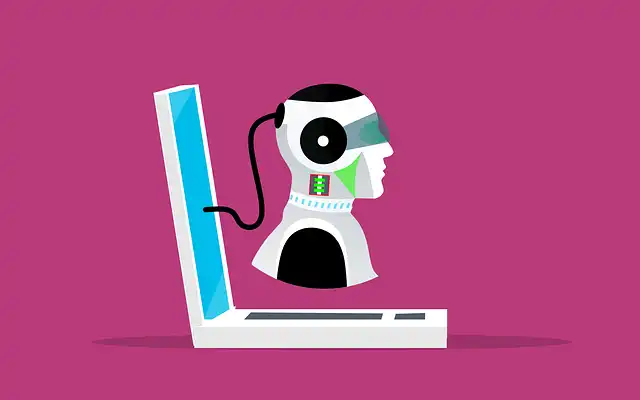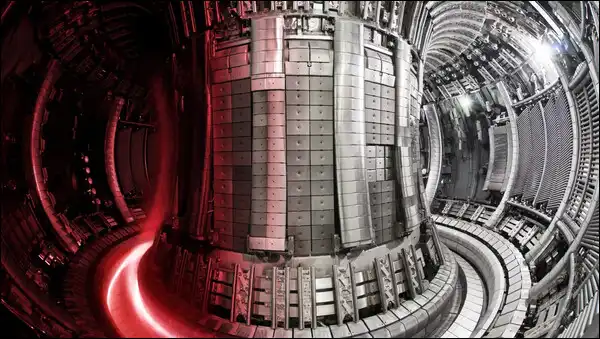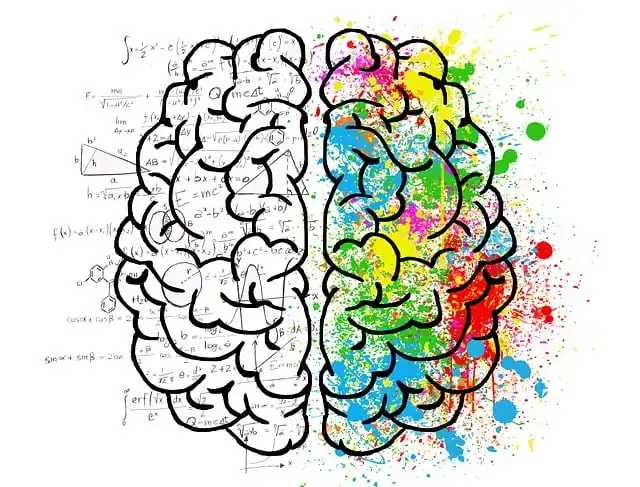| Previous
Page |
PCLinuxOS
Magazine |
PCLinuxOS |
Article List |
Disclaimer |
Next Page |
ICYMI: 3 Million “Smart Toothbrushes” Hacked With Malware, Used For DDoS Attack |
|
by Paul Arnote (parnote)
The Qualys Threat Research Unit (TRU) has recently unearthed four significant vulnerabilities in the GNU C Library, a cornerstone for countless applications in the Linux environment, the Qualys team announced on their blog. The vulnerabilities identified in glibc's syslog and qsort functions highlight a critical aspect of software security: even the most foundational and trusted components are not immune to flaws. The ramifications of these vulnerabilities extend far beyond individual systems, affecting many applications and potentially millions of users worldwide. For what it's worth, Texstar has patched and updated glibc on PCLinuxOS. On Jan. 29, 2024, U.S. President Joe Biden announced actions based on an October 2023 executive order on the use and regulation of artificial intelligence. These actions fulfill the 90-day goals of the AI Executive order, according to an article from TechRepublic. The executive order featured wide-ranging guidance on maintaining safety, civil rights and privacy within government agencies while promoting AI innovation and competition throughout the U.S. Although the executive order didn't specify generative artificial intelligence, it was likely issued in reaction to the proliferation of generative AI, which has become a hot topic since the public release of OpenAI's ChatGPT in November 2022. Arc Search combines a browser, search engine, and AI into something genuinely interesting and useful, and may represent the future of the internet, according to an article from Lifehacker. Arc Search is built on the belief that a browser, a search engine, and an AI chatbot can work together to build a pleasurable internet experience for you, instead of fighting for ad space or creating silos (Microsoft Edge versus Bing, Google Chrome versus Bard).  Image by Clickschool from Pixabay According to a recent report published by the Aargauer Zeitung (h/t Golem.de), around three million smart toothbrushes have been infected by hackers and enslaved into botnets, says an article from Tom's Hardware. The source report says this sizable army of connected dental cleansing tools was used in a DDoS attack on a Swiss company's website. The firm's site collapsed under the strain of the attack, reportedly resulting in the loss of millions of Euros of business. [Ahmm!] I don't think I need a toothbrush that connects to the internet to be able to properly brush my teeth. Isn't that something every parent teaches their children? AnyDesk Software, the Germany-based developer of the popular remote access software, informed customers on February 2, 2024, about a significant security breach, according to an article from SecurityWeek. According to the company, a security audit triggered by suspicious activity led to the discovery that AnyDesk production systems were compromised. Little information has been shared on the attack itself, but AnyDesk has clarified that the incident “is not related to ransomware”. “We have revoked all security-related certificates and systems have been remediated or replaced where necessary. We will be revoking the previous code signing certificate for our binaries shortly and have already started replacing it with a new one,” AnyDesk said. It added, “Our systems are designed not to store private keys, security tokens or passwords that could be exploited to connect to end user devices. As a precaution, we are revoking all passwords to our web portal, my.anydesk.com, and we recommend that users change their passwords if the same credentials are used elsewhere.” Smoking cessation was associated with a reduced cancer risk in the long run, particularly when quitting was sustained and occurred prior to middle age, a large population-based study from Korea found, according to an article from MedPage Today. Over a mean 13 years follow-up, smokers who completely quit had a 17% lower risk of any cancer compared with people who continuously smoked, according to findings from Jin-Kyoung Oh, PhD, of the National Cancer Center in Gyeonggi, Korea, and colleagues. The authors reported that regardless of when a person quit smoking within their lifetime, their cancer risk was still significantly reduced. However, when smokers quit before the age of 50, their risk was reduced to a greater degree than if they quit after reaching age 50.  Image by ImagesBG from Pixabay California is set to adopt regulations that will allow for sewage to be extensively treated, transformed into pure drinking water and delivered directly to people's taps, according to an article from the LA Times. The regulations are expected to be approved by the State Water Resources Control Board, enabling water suppliers to begin building advanced treatment plants that will turn wastewater into a source of clean drinking water. The new rules represent a major milestone in California's efforts to stretch supplies by recycling more of the water that flows down drains. It's expected to cost about half of what it costs to desalinate sea water into potable water. Voyager 1 is still alive out there, barreling into the cosmos more than 15 billion miles away. However, a computer problem has kept the mission's loyal support team in Southern California from knowing much more about the status of one of NASA's longest-lived spacecraft, according to an article from ArsTechnica. The computer glitch cropped up on November 14, and it affected Voyager 1's ability to send back telemetry data, such as measurements from the spacecraft's science instruments or basic engineering information about how the probe was doing. So, there's no insight into key parameters regarding the craft's propulsion, power, or control systems. "It would be the biggest miracle if we get it back. We certainly haven't given up," said Suzanne Dodd, Voyager project manager at NASA's Jet Propulsion Laboratory, in an interview with Ars. "There are other things we can try. But this is, by far, the most serious since I've been project manager." According to an article from the New York Times, David L. Mills, an internet pioneer who developed and, for decades, implemented the timekeeping protocol used by financial markets, power grids, satellites and billions of computers to make sure they run simultaneously, earning him a reputation as the internet's “Father Time,” died on Jan. 17 at his home in Newark, Del. He was 85. Dr. Mills was among the inner circle of computer scientists who from the 1960s through the '90s developed Arpanet, a relatively small network of linked computers located at academic and research institutions, and then its globe-spanning successor, the internet.  Image by Mustafa shehadeh from Pixabay Do you find videos from your favorite streaming site getting longer and longer? Do you find yourself having to wade through a novella of trite details and “feelings” just to get to the recipe you're interested in? Don't worry … you're not alone. This is the very topic explored by an article from The Atlantic. A little over a year after the public launch of ChatGPT, we're starting to see one prediction come true of how it could affect the internet: AI spam is flooding the web, according to an article from Business Insider. In just one week in late January and early February, there were three examples of how this played out. First, 404 Media, a new tech blog, wrote that it had to modify its website because of artificial-intelligence spam. Recently, it has noticed that AI-written versions of its scoops have shown up on spam sites that are friendly to search-engine optimization — sometimes even showing up above the real 404 Media articles on Google search results. The scammers, of course, are making money by running ads on the AI-generated pages. A set of ancient texts burned by the volcanic eruption of Mount Vesuvius in 79 A.D. have been deciphered thanks to a team of researchers using AI, according to an article from Fox News (and widely reported on by other media outlets). The nearly 2,000-year-old texts were unreadable after being charred in a villa in Herculaneum, a Roman town near Pompeii. Believed to have been owned by the father-in-law of Julius Caesar, the texts were carbonized by the heat of the volcanic debris. The ancient texts remained undiscovered for centuries until an Italian farmer discovered the villa in the mid-eighteenth century.  Image by Gerd Altmann from Pixabay An engineering researcher at Rochester Institute of Technology has discovered the means to process data using DNA, according to an article from Rochester Institute of Technology. Amlan Ganguly, computer engineering department head in RIT's Kate Gleason College of Engineering, and researchers at the University of Minnesota, designed a microfluidic integrated circuit to perform complex operations through artificial neural network computations on data stored in DNA. Their biocomputing design is a breakthrough that builds on innovative DNA engineering and computing system advances. “We are in the age of big data that needs to be stored somewhere. We don't think that more data centers are the answer, or even the best answer. Each data center requires the equivalent of a city block of power. Building, maintaining, and operating more traditional data centers is not sustainable,” said Ganguly, who added data stored on DNA is a largely unexplored area of research. “DNA is excellent at storing information, in fact, it is much better than the electronic modes of memory because it is about 3-to-6 orders of magnitude more compact than most memory hardware that we have; it is also much more reliable and durable.” A new cooling technique that utilizes a single species of trapped ion for both computing and cooling could simplify the use of quantum charge-coupled devices (QCCDs), potentially moving quantum computing closer to practical applications, according to an article from phys.org. Using a technique called rapid ion exchange cooling, scientists at the Georgia Tech Research Institute (GTRI) have shown that they could cool a calcium ion—which gains vibrational energy while doing quantum computations—by moving a cold ion of the same species into close proximity. After transferring energy from the hot ion to the cold one, the refrigerant ion is returned to a nearby reservoir to be cooled for further use. Chrome's Incognito mode is a bit of a joke that even Google employees weren't so hyped about it, according to an article from Gizmodo. It's now going to be less useful for “privacy” reasons, as explained in a new disclaimer change. An updated warning page for Incognito mode went live on Canary, a version of Chrome primarily used by developers, as first spotted by MSPowerUser on Tuesday. The new text confirms your data will be collected by websites and Google while browsing in this mode. This change has yet to hit the latest version of Chrome, but it's likely to come soon. Here's the updated disclaimer's new text: “Others who use this device won't see your activity, so you can browse more privately. This won't change how data is collected by websites you visit and the services they use, including Google. Downloads, bookmarks and reading list items will be saved.” Google's update to the disclaimer stems from a 2020 lawsuit the company was hit with over the not-so-private Incognito mode. That $5 billion class-action suit alleged Google's privacy options didn't work as described, meaning users were continually tracked while using Chrome. Google settled the lawsuit in late December according to Reuters, but #no details of the settlement were made public, and it will still need to be approved by a judge in February.  NASA/JPL-CalTech A “super-Earth” ripe for further investigation orbits a small, reddish star that is, by astronomical standards, fairly close to us – only 137 light-years away, reports NASA. The same system also might harbor a second, Earth-sized planet. The bigger planet, dubbed TOI-715 b, is about one and a half times as wide as Earth, and orbits within the “conservative” habitable zone around its parent star. That's the distance from the star that could give the planet the right temperature for liquid water to form on its surface. Several other factors would have to line up, of course, for surface water to be present, especially having a suitable atmosphere. But the conservative habitable zone – a narrower and potentially more robust definition than the broader “optimistic” habitable zone – puts it in prime position, at least by the rough measurements made so far. The smaller planet could be only slightly larger than Earth, and also might dwell just inside the conservative habitable zone. According to an article from Lifehacker, there was a time that whenever you looked at search results on Google, you could click the "Cached" button to view an archived version of the page. Unfortunately, Google has decided to remove the feature. The company's stated reason is that the feature was created to allow users a way to see the content at a time when sites would go offline frequently, and that the basic functionality of the internet has improved to the extent that it's no longer necessary. Whatever the reason, it means yet another useful feature has found itself in Google's graveyard. Artificial intelligence is taking over countless industries around the U.S., raising concerns among Americans who fear they will be replaced by the tech. Now, new research has revealed the most and least AI-proof cities across the U.S., based on five key metrics including job availability, the state's population growth rate, and job diversity, according to an article from the Daily Mail. Workers based in major tech hubs should look to large, coastal metropolitan areas if they want to avoid losing out to artificial intelligence, with Phoenix, Arizona coming in first as the most AI-proof city in the country. The report warned that Providence, Rhode Island is the top city most susceptible to AI-related job loss.  Image by Faisal Mehmood from Pixabay OpenAI is finally making it easier to tell if an image was made with the DALL-E 3, according to an article from Lifehacker. The company shared the news this week, noting that it will soon start adding two types of watermarks to all images generated by DALL-E 3, adhering to standards set forth by the C2PA (The Coalition for Content Provenance and Authenticity). The change is already rolling out to images generated through the website and via the API, but mobile users will start getting the watermarks starting Feb. 12. The first of two watermarks exists strictly within the image's metadata (which we've shown in this magazine is EASILY deleted). You'll be able to check the creation data of an image using the Content Credentials Verify website, as well as other websites like it. The second watermark will be a visible CR symbol in the top left corner of the image (which even a Gimp novice can remove easily). In my opinion, both “watermarks” are 100% dependent on the honesty of the user. Those using AI-generated images for more nefarious purposes can't be counted on to uphold their end of that “bargain.” Thus, nothing has changed with regard to whether you can discern what images are real and what images have been created with AI. From the Google blog … Since we launched Bard last year, people all over the world have used it to collaborate with AI in a completely new way — to prepare for job interviews, debug code, brainstorm new business ideas or, as we announced last week, create captivating images. Our mission with Bard has always been to give you direct access to our AI models, and Gemini represents our most capable family of models. To reflect this, Bard will now simply be known as Gemini. You can already chat with Gemini with our Pro 1.0 model in over 40 languages and more than 230 countries and territories. And now, we're bringing you two new experiences — Gemini Advanced and a mobile app — to help you easily collaborate with the best of Google AI. From the same Google blog … Gemini Advanced is available as part of our brand-new Google One AI Premium Plan for $19.99/month, starting with a two-month trial at no cost. This plan gives you the best of Google AI and our latest advancements, along with all the benefits of the existing Google One Premium plan, such as 2TB of storage. In addition, AI Premium subscribers will soon be able to use Gemini in Gmail, Docs, Slides, Sheets and more (formerly known as Duet AI). Personally, I'd be reluctant to put much stock into yet another Google “service,” given the EXTREMELY LONG list of casualties that fill the Google Graveyard.  Image by Mohamed Hassan from Pixabay Google may be saying a “slow farewell” to Google Assistant, according to an article from Lifehacker. Google has been working its way up the AI chain via improvements to Bard, which have resulted in the launch of Gemini. In news that may not be so surprising, Google allows you to replace Google Assistant with Gemini on Android. This follows the recent news of major layoffs in the Google Assistant team and the subsequent deletion of a long list of Assistant features. Once the Gemini app is installed, you'll be able to launch it the same way that you launch Google Assistant on your Android phone. Google says you'll be able to use Gemini by hitting the power button, using the corner swipe gesture on some phones, or just using the "Hey Google" voice command. You can send queries by typing them into the Gemini app, voice commands, or by sending images to the AI assistant. Hey! Am I the only one thinking software bloat has gotten out of hand, and is becoming the Achilles heel of the software world? Well, apparently not. IEEE Spectrum reran an article that originally appeared in the 1995 issue of IEEE's Computer magazine. The thing is that this article rings even truer today than it did when it first ran nearly 30 years ago! Sure, today's computers have many, MANY times more RAM and infinitely larger storage devices than were even DREAMED of 30 years ago. But, just because you have tons more RAM and exorbitantly large storage devices, doesn't mean you have to USE all of that RAM or storage space. In short, just because you can, doesn't mean you should. After all these years, this article STILL hits the nail squarely on the head. A revolutionary telescope will come online in 2025. And mounted to it will be a giant camera built to capture extraordinary views of space, according to an article from Mashable. The United States' SLAC National Accelerator Laboratory is finishing the over 5.5-foot-tall, 6,200-pound (1.65-meter and 2,800-kilogram) LSST Camera, which will snap cosmic images at the much-anticipated Vera C. Rubin Observatory located in the lofty Chilean mountains. The lab posted new images online showing the over 12-foot-long (3.7 m) camera, with its imposing lens, in a clean room. "About the size of a small SUV, the LSST [Legacy Survey of Space and Time] Camera is the largest camera ever constructed for astronomy," the lab said. Engineers will mount the big camera on the observatory's 27.5-foot-wide (8.4-meter) Simonyi Survey Telescope, itself a revolutionary instrument: It will be the fastest large telescope on Earth, with the ability to swivel 180 degrees in just 20 seconds.  JET tokamak interior - United Kingdom Atomic Energy Authority Scientists and engineers near the English city of Oxford have set a nuclear fusion energy record, they announced on February 8, 2024, bringing the clean, futuristic power source another step closer to reality, according to an article from CNN. Using the Joint European Torus (JET) — a huge, donut-shaped machine known as a tokamak — the scientists sustained a record 69 megajoules of fusion energy for five seconds, using just 0.2 milligrams of fuel. That's enough to power roughly 12,000 households for the same amount of time. Nuclear fusion is the same process that powers the sun and other stars, and is widely seen as the holy grail of clean energy. Experts have worked for decades to master the highly complex process on Earth, and if they do, fusion could generate enormous amounts of energy with tiny inputs of fuel and emit zero planet-warming carbon in the process. The scientists fed the tokamak deuterium and tritium, which are hydrogen isotopes that future commercial fusion plants are most likely to use. Researchers from New York University (NYU) have discovered that classical computers can, in some circumstances, keep up with, or even surpass, quantum computers, according to an article from Interesting Engineering. They found that by adopting a new innovative algorithmic method, classical computers can get a much-needed boost in speed and accuracy, which could mean that they still have a future should quantum computers ever take off. Many experts believe that quantum computing represents a paradigm shift from classical computing. This is primarily because classical computers, as you are aware, process information using digital bits (0s and 1s), while quantum computers use quantum bits (qubits) to store information in values between 0 and 1. From the scary-use-of-AI-without-regulation-or-guardrails department, depending on where you work, there's a significant chance that artificial intelligence is analyzing your messages on Slack, Microsoft Teams, Zoom and other popular apps, according to an article from CNBC. Huge U.S. employers such as Walmart, Delta Air Lines, T-Mobile, Chevron and Starbucks, as well as European brands including Nestle and AstraZeneca, have turned to a seven-year-old startup, Aware, to monitor chatter among their rank and file, according to the company. Jeff Schumann, co-founder and CEO of the Columbus, Ohio-based startup, says the AI helps companies “understand the risk within their communications,” getting a read on employee sentiment in real time, rather than depending on an annual or twice-per-year survey. Using the anonymized data in Aware's analytics product, clients can see how employees of a certain age group or in a particular geography are responding to a new corporate policy or marketing campaign, according to Schumann. Aware's dozens of AI models, built to read text and process images, can also identify bullying, harassment, discrimination, noncompliance, pornography, nudity and other behaviors, he said. Aware's analytics tool — the one that monitors employee sentiment and toxicity — doesn't have the ability to flag individual employee names, according to Schumann. But its separate eDiscovery tool can, in the event of extreme threats or other risk behaviors that are predetermined by the client, he added. Aware said Walmart, T-Mobile, Chevron and Starbucks use its technology for governance risk and compliance, and that type of work accounts for about 80% of the company's business.  Image by Mohamed Hassan from Pixabay Artists have secured a small but meaningful win in their lawsuit against generative artificial intelligence art generators in what's considered the leading case over the uncompensated and unauthorized use of billions of images downloaded from the internet to train AI systems, according to an article from The Hollywood Reporter. A federal judge refused to acknowledge that the companies can avail themselves of free speech protections and stated that the case is in the public interest. U.S. District Judge William Orrick, in an order issued on Thursday night, rebuffed arguments from StabilityAI and Midjourney that they are entitled to a First Amendment defense arising under a California statute allowing for the early dismissal of claims intended to chill free speech. They had argued that the suit targets their “speech”, because the creation of art reflecting new ideas and concepts — like those conveyed in text prompts to elicit hyperrealistic graphics — is constitutionally protected activity. Every piece of fiction carries a kernel of truth, and now is about the time to get a step ahead of sci-fi dystopias and determine what the risk in machine sentience can be for humans, according to an article from SciTechDaily. Although people have long pondered the future of intelligent machinery, such questions have become all the more pressing with the rise of artificial intelligence (AI) and machine learning. These machines resemble human interactions: they can help problem solve, create content, and even carry on conversations. For fans of science fiction and dystopian novels, a looming issue could be on the horizon: what if these machines develop a sense of consciousness? Researchers published their results in the Journal of Social Computing. While there is no quantifiable data presented in this discussion on artificial sentience (AS) in machines, there are many parallels drawn between human language development and the factors needed for machines to develop language in a meaningful way. A report published in JAMA Internal Medicine several years ago highlighted a link between long-term use of anticholinergic medications like Benadryl and dementia, according to an article from Harvard Health Publishing. While this study and other observational studies have also found this association, it doesn't prove that these drugs cause dementia. But we do know that anticholinergic drugs can cause confusion and increase fall risk in older people.  Image by Manfred Steger from Pixabay When it's after hours, and the boss is on the line, Australian workers — already among the world's best-rested and most personally fulfilled employees — can soon press “decline” in favor of the seductive call of the beach, according to an article from The Seattle Times. In yet another buttress against the scourge of overwork, Australia's Senate on Thursday passed a bill giving workers the right to ignore calls and messages outside of working hours without fear of repercussions. It will now return to the House of Representatives for final approval. The bill, expected to pass in the House with ease, will let Australian workers refuse “unreasonable” professional communication outside the workday. Workplaces that punish employees for not responding to such demands could be fined. Do you want to install and run Kodi on an Amazon Fire TV stick? If so, this article from Lifehacker is for you! The article runs, step-by-step, through the process of installing the Kodi Android app on an Amazon Fire TV stick, even though Kodi doesn't have an official app in the Amazon app store. Paul McCartney's original bass guitar, which the legendary musician used in The Beatles' early years, has been found and returned after it was stolen more than five decades ago, according to an article from Fox News. The 81-year-old singer-songwriter was reunited with the left-handed Höfner 500/1 Violin Bass after its manufacturer and a husband-and-wife team of journalists embarked on a search for the missing instrument in 2018 that later became a crowdsourcing campaign called The Lost Bass Project. A statement shared on McCartney's website confirmed that the guitar had been discovered and returned to its original owner. "Following the launch of last year's Lost Bass project, Paul's 1961 Höfner 500/1 bass guitar, which was stolen in 1972, has been returned. The guitar has been authenticated by Höfner and Paul is incredibly grateful to all those involved," the statement read.  TriStar Pictures, Johnny Mnemonic Do you roll with laughter over Hollywood's depiction of the internet? Well, you're not alone. An article from ScreenCrush takes a look at the most ridiculous depictions of the internet in movies. University of Pennsylvania engineers have developed a new chip that uses light waves, rather than electricity, to perform the complex math essential to training AI, according to an article from phys.org. The chip has the potential to radically accelerate the processing speed of computers while also reducing their energy consumption. The silicon-photonic (SiPh) chip's design is the first to bring together Benjamin Franklin Medal Laureate and H. Nedwill Ramsey Professor Nader Engheta's pioneering research in manipulating materials at the nanoscale to perform mathematical computations using light — the fastest possible means of communication — with the SiPh platform, which uses silicon, the cheap, abundant element used to mass-produce computer chips. In addition to faster speed and less energy consumption, Engheta and Aflatouni's chip has privacy advantages: Because many computations can happen simultaneously, there will be no need to store sensitive information in a computer's working memory, rendering a future computer powered by such technology virtually unhackable. "No one can hack into a non-existing memory to access your information," says Aflatouni. House clearance company Just Clear has gone public with one of its findings, a Q1 microchip computer, identified as the earliest example of a desktop PC, according to an article from PCGamesN. Better still, it found not one, but two of these historic examples of technology, and they're believed to be the first ever desktop PC made available to the public. And, of course, they were powered by Intel.  The European Court of Human Rights (ECHR) has ruled that weakening end-to-end encryption disproportionately risks undermining human rights, according to an article from Ars Technica (and widely reported in many other media outlets). The international court's decision could potentially disrupt the European Commission's proposed plans to require email and messaging service providers to create backdoors that would allow law enforcement to easily decrypt users' messages. We now know exactly how much material OSIRIS-REx captured from its target asteroid Bennu — and, it's a lot, according to an article from Space.com. In addition to the 2.48 ounces (70.3 grams) of sample already collected from the outside of the canister, NASA has finally managed to fully open OSIRIS-REx's sample container to find another 1.81 ounces (51.2 grams) of asteroid Bennu within. In all, the probe collected more than twice what scientists had hoped for. The scientists trained the Webb telescope, which orbits 1 million miles from Earth, on the two largest-known Kuiper Belt objects — Eris and Makemake. This instrument is fitted with specialized cameras that can detect different types of elements or molecules (like water or carbon dioxide) on distant worlds. There's welcome news in the battle against the Ebola virus, an infectious disease that for years had almost no treatments or remedies, according to an article from NPR. Outbreaks of the deadly Ebola virus flare up in parts of Africa almost every year, and they're vicious. The virus kills about half the people it infects. But a new study published in The Lancet Infectious Diseases shows that a promising vaccine (with the complicated name rVSVΔG-ZEBOV-GP) can cut those mortality numbers in half. The results reveal that vaccination doesn't just help to reduce infections — it also reduces deaths from the virus.  A recent study conducted by Massachusetts General Hospital (MGH) researchers has utilized sophisticated brain recording methods to reveal the collaborative function of neurons in the human brain, enabling individuals to formulate their thoughts into words and subsequently articulate them verbally, according to an article from SciTechDaily. Together, these findings provide a detailed map of how speech sounds such as consonants and vowels are represented in the brain well before they are even spoken, and how they are strung together during language production. The work, which is published in Nature, reveals insights into the brain's neurons that enable language production, and which could lead to improvements in the understanding and treatment of speech and language disorders. A five-dollar circuit board could hold the key to near-instantaneous breast cancer screenings, according to an article from Study Finds. Scientists say a new handheld device is capable of testing for breast cancer in less than five seconds using just a small sample of saliva. This portable device is not only remarkably quick and user-friendly but also highly cost-effective. The $5 device, along with its test strips that cost just a few cents each, uses common components. These include glucose testing strips readily available on the market and Arduino, an open-source hardware-software platform. An innovative treatment significantly increases the survival of people with malignant mesothelioma, according to an article from Medical Xpress. Malignant pleural mesothelioma is a rare but rapidly fatal type of cancer with few effective treatment options, according to results from a clinical trial led by Queen Mary University of London. The findings have been published in JAMA Oncology. MPM is a rare, aggressive cancer that affects the lining of the lungs and is associated with exposure to asbestos. It's usually treated with potent chemotherapy drugs, but these are seldom able to halt the progression of the disease. |









